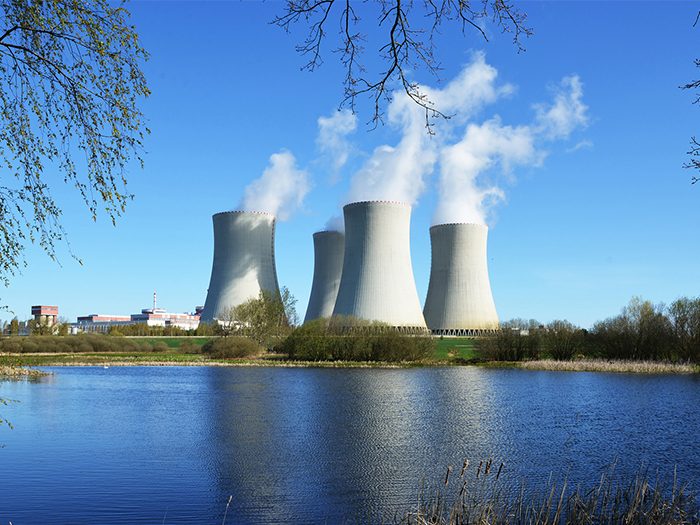Nuclear Energy
Decommissionings Open Opportunities for Underwriters

Nuclear power plants that were built in large numbers in previous decades are now coming to the end of their licenses in the same large numbers.
Many operators are choosing to decommission the facilities, rather than try to renew the licenses for a variety of economic and political reasons. That big slug of current and near-future projects creates an emerging market for conventional insurance and new risk-management approaches.
Companies with expertise in construction and waste-handling are set to take on these projects, bringing economies of scale and operational efficiencies. Increasingly, they are not just being hired by operators, but are taking ownership of retired facilities and the decommissioning trust funds that by law are funded by every plant operator.
“We’ve been spending a lot of time talking to customers in the construction industry that focus on nuclear,” said Tom Grandmaison, executive vice president and construction casualty leader at AIG.
“They believe what we do: that decommissioning capacity in the U.S. will be necessary in fairly swift order. Call it the next 12 months to five years.
“With that we think there is tremendous opportunity beyond typical insurance like property, casualty and financial lines. There will also be interest in the management and security of decommissioning trust funds in the U.S.”
Standard lines are required as part of a decommissioning, as they would be for any type of large construction project, but the difference is this is a deconstruction project on the order of $1-$4 billion. A wrap policy that protects the owners and the contractors on the job is necessary. That usually includes general liability, auto liability, workers’ comp, and some builders’ risk and continued non-nuclear property coverage.
Some carriers are hesitant to offer coverage for a nuclear facility even if they are not offering nuclear-liability protection per se. As a result, the markets are somewhat limited.
“It’s a psychological thing, the word nuclear for one,” added Ted Joy, senior vice president, and nuclear practice leader at AIG.
“It’s the fear of going up the chain of command seeking authority to quote projects when historically ‘nuclear’ has been a disqualifying word related to risk. Though if you study the issue, the actual risks have been minimal compared to the perceived risks of nuclear projects and facilities. The safety culture is first class, the work force is better-trained and -educated than similar industrial facilities, and the regulations are intense. So the actual risk does not live up to the perceived or implied risk.”
Upcoming decommissioning projects are aligning into two models of management and financing, according to Joy.
“Regulated utilities, with their continued reliance on a ratepayer base, are largely self-managing decommissioning projects. They hire a contractor to perform the decommissioning work and fund it with the balance of the Nuclear Decommissioning Trust. Funding shortfalls are handled either through delaying the project, which regulations allow up to 60 years, or assessing the utility ratepayers.”
In contrast, deregulated utilities have begun looking at market opportunities to rid themselves of shuttered nuclear plants and their associated liabilities. “Without a ratepayer base as a fallback,” Joy explained, “these utilities have sought buyers that will purchase the plant, its decommissioning liabilities, and its trust fund, and perform the project as a profitable venture.
“This new model presents additional opportunities for the insurance industry beyond standard lines, as financial and risk management become more absolute and the backstops available to regulated utilities are limited.”
There are 102 licensed reactors in the U.S., and a third of those may be shutting in the foreseeable future, states Dan McGarvey, managing director of the power and utility practice at Marsh, and a multiple Risk & Insurance Power Broker® winner.
“This new model presents additional opportunities for the insurance industry beyond standard lines, as financial and risk management become more absolute and the backstops available to regulated utilities are limited.” — Ted Joy, senior vice president, and nuclear practice leader, AIG
“It is a growing trend and an opportunity for third parties to take over the facilities and the trust funds for decommissioning. Utility operators have acknowledged that they are not experts on demolition and waste disposal.”
Most decommissioned plants are put into a status called ‘safestor’ in which they are secured for up to 60 years, but not demolished. The common non-technical expression is ‘mothballed.’ Some reactor stations are completely demolished with waste stored either on site or removed. The decision by the owner among decommissioning choices depends on many factors, and is in many ways an educated guess on possible future costs and regulations.
“This is all about health and physics,” said McGarvey.
“The best move for an operator is to form a partnership with a contractor that has itself a relationship with a waste disposal site. Someone who knows how to section large pressure vessels, and also can deal with fuel and radioactive materials. Some of those contractors are saying they will assume the risk of ownership of the facilities. Now that several such projects have been completed safely and under budget, the industry is getting comfortable with that approach.”











